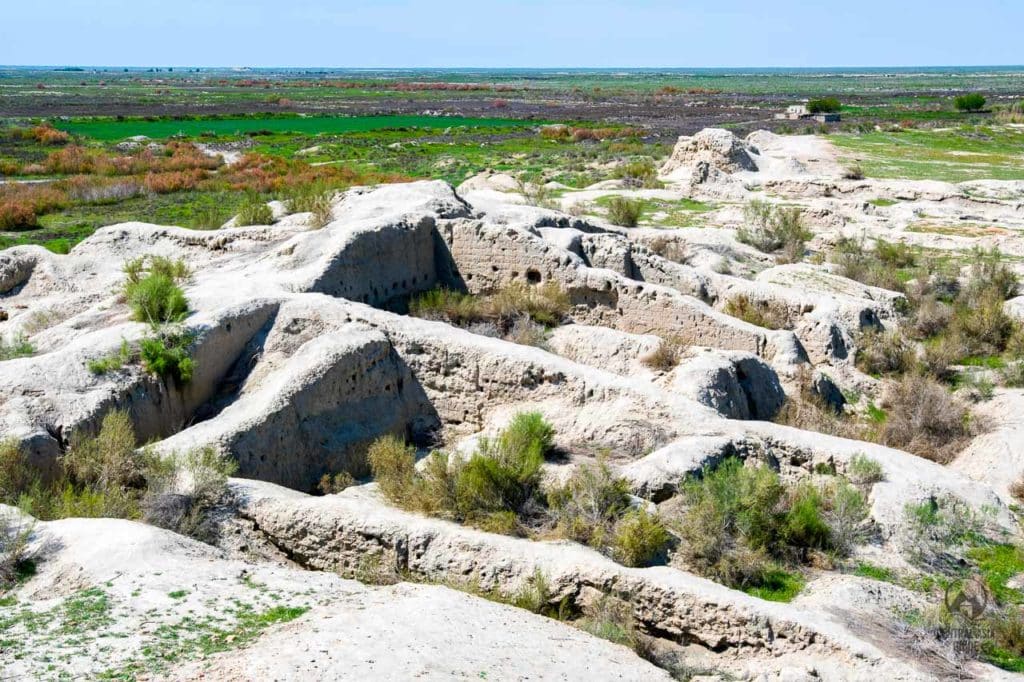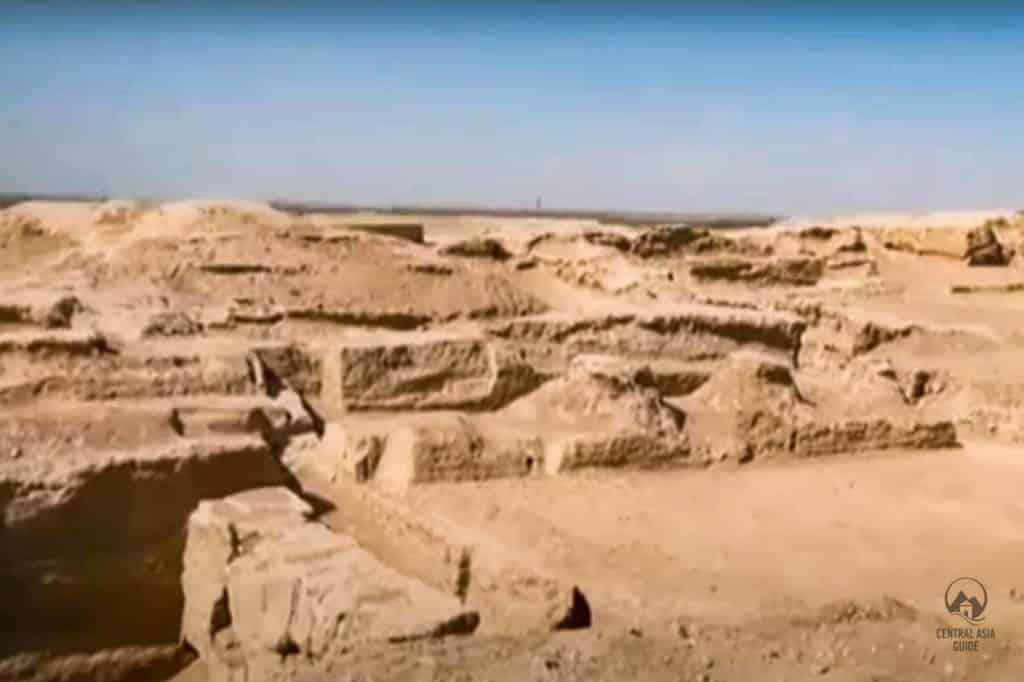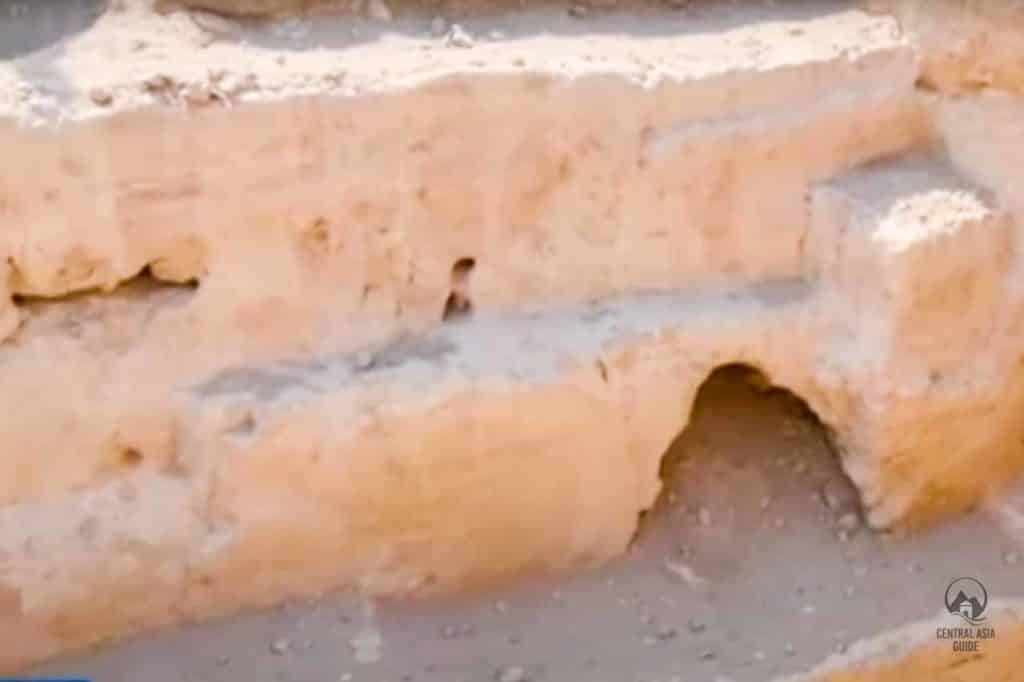Bukhara
Ancient Settlements
Bukhara Ancient Settlements
About three hundred settlements have existed on the territory of the Bukhara oasis throughout the history. Hundreds of swollen hills and mounds with the ruins of disappeared cities and settlements are hiding in the depths. Many of them are waiting for their discoverers and some, such as Varakhsha and Paikend, have already been investigated by archaeologists and have become historical monuments of past civilizations. Varakhsha and Paykend both make good half day trips from Bukhara if one wants to escape to the less populated areas from bustle of the city. Both of them were substantial, well-fortified cities and older than Bukhara itself.
These cities of the Bukhara oasis and the other loosely aligned city-states which made up Sogdiana, dominated trade on the Silk Road arteries, stretching from China and India to Byzantium, southern Russia and northern Africa. Their language, an early form of Iranian, became the lingua franca of commerce of their time.
Varakhsha
Varakhsha (also known as Varasha and Varahsha) was a medieval city in the Bukhara oasis in Sogdia and was established already in the 1st century BC. It is located 39 km northwest of Bukhara and it was the capital of the Sogdian dynasty of the kings of Bukhara.
Bunyat Bukhar was drinking wine in his palace at Varakhsha settlement in the knowledge that he was the ruler of the richest city in Mavarranawahr when two horsemen bearing the Caliph’s standard appeared as two clouds of dust on the horizon. They rode into the fortress, dismounted and without saying a word, drew their swords and cut off his head. They accused him of aiding and abetting heretic Mokanna, proclaimed the end of the Bukhar Khudat line and departed.
The death of Bunyat in 782 declared the slow decline of the city of Varakhsha, a city older and bigger than Bukhara, home to Hephalite kings and Sogdian princes and a staging post on the eight-day caravan trail to Khorezm. The Hephthalites emerged in the fifth-century AD. and at the peak of their empire they controlled much of East Turkistan (current day Xinjiang Province China, Afghanistan, and northwest India.
According to one contemporary historian, the word “Hephthalite” is derived from the Sogdian word for “strong man”. Although the Hephthalites may have claimed suzerainty over the city-states of the Zerafshan Valley, the Sogdians probably enjoyed a degree of autonomy and by 563 AD, Hephthalite influence in the region had totally ended. It was around this time that the Ark of Bukhara and the various small settlements surrounding it had blended into an important city. Still, it was one of the numerous cities in the Bukhara Oasis and not necessarily the most dominant.
The ruins of Varakhsha can be now found in the desert but during its peak it was at the western edge of the Bukharan oasis.

Paykend
Paykend (also Paikand or Baikand) was a city that flourished for one and a half thousand years but was finally swallowed by the sands of Kyzyl Kum in the 13th century. It was a major handicraft center and an important trade point and an urban settlement on the Great Silk Road, now located about 50 km southwest from modern Bukhara. Under a layer of sand, there are the remains of the city that arose in the 6th – 3rd centuries BC. The town was noted for the products of its craftsmen including glass-blowers, potters and armorers. People of Paykend also reached a high level in the use of home comforts. Their homes had wash-stands, bathrooms, toilets and Paikend was well-known as the first Central Asian city- republic governed by rich tradesmen.
Today this ancient town is partly buried under sands and being excavated. Archaeologists have found the base of a 9th-century minaret which is 11 meters in diameter. This is a measure more than the size of the basis of the famous Bukhara minaret Kalyan (early 12th century) – the highest minaret in Central Asia. Judging by the basis, the minaret in Paikend was much higher but unfortunately time has not spared it for us as it was made of adobe bricks. Perhaps the builders of Kalyan took this sad experience into account and used baked bricks instead of adobe ones.


Among the archaeological findings is also the very first pharmacy in Central Asia. It was discovered in the center of Paikend by the findings of glass jars for phlebotomy and a cup with wax residue accompanied by two documents written in Arabic. One of them contained the date it had been written mentioning June 30, year 790. Archaeologists also discovered perfect samples of glass items and glazed pots. In one of them, there was a decorative inscription in Arabic ligature which said: “Eat and drink as you please”.
The excavation works have been carried out here for more than 20 years by Uzbek archeologists and their Russian colleagues from State Hermitage in St. Petersburg. They have also discovered the remains of a building related to Zoroastrianism containing a fire shelter. Ferdowsi reports in his poem “Shahnameh” that the legendary Khosrov built a Temple of Fire in Paykand , where the sacred book of the Zoroastrians called “Avesta”, written in gold, was kept.
Paykend history
Paikend, like the ancient settlement of Karmana (modern Navoi), which is located on the border of the Kyzyl Kum desert, was once a prospering city but experienced a sad fate, 800 years ago it was buried under moving sands and almost vanished off the surface of the earth. Before the tragedy, this city was a remarkably famous stop along the silk road. The major goods transported were local and Chinese silk. To obtain the Chinese silk, Paikend tradesmen arranged caravans to the Great Chinese wall. From Paikend caravans were sent to Afghanistan, India, the Caucasus, the Ural, and the Volga river area. The caravans carried also fast horses, Lucerne seeds, young plants of fruit trees, glass and pottery. Paikend traders even went as far as Japan, Vietnam, and Ceylon, whereas at Paikend bazaars one could meet Arab, Indian, Chinese, Afghani, Persian and European merchants.
Paikend was guarded by massive fortifications and watchtowers placed at a distance of 60 meters from each other. The most exciting point is that the city was guarded by a female garrison. This was actually not surprising, since the majority of the male population was frequently away on business trips. Local women were also always known to be very independent.
In an early stage of the city’s development (the 4th-1st century BC) they even used to choose their husbands themselves and often more than one. From childhood, girls were trained in horseback riding and archery. This was scientifically proved during the excavation works when archeologists found some small elegant bone rings that were not decorations. The clue was simple: such a ring was worn by a woman on the middle finger and was used for drawing the bowstring.
In the 8th century, Paikend was the first town to face Arab conquerors. After a two-month attack, the city was taken by deception and its inhabitants were captured. According to historical sources, the conquerors got an enormous loot including gold and silver vessels, two pearls the size of a pigeon egg, golden statues of Buddha (which were later melted down in gold bars) and magnificent armors. The leftovers were distributed among soldiers.
The men slowly arriving back to the city realized that the city had turned to ashes but eventually released their women and children and restored the city. As historians say, within a very short time the city was restored. However, it was not the enemy’s invasion but dryness that bought to the city to its inevitable end. The drought was caused by the extreme decrease in the water level in the lower reaches of the Zerafshan river. The townspeople did their best to return water and dug channels, but ultimately could not resist nature and therefore had to move to other lands.
Other sights & destinations near Paykend and Varaksha
Page updated 20.3.2023